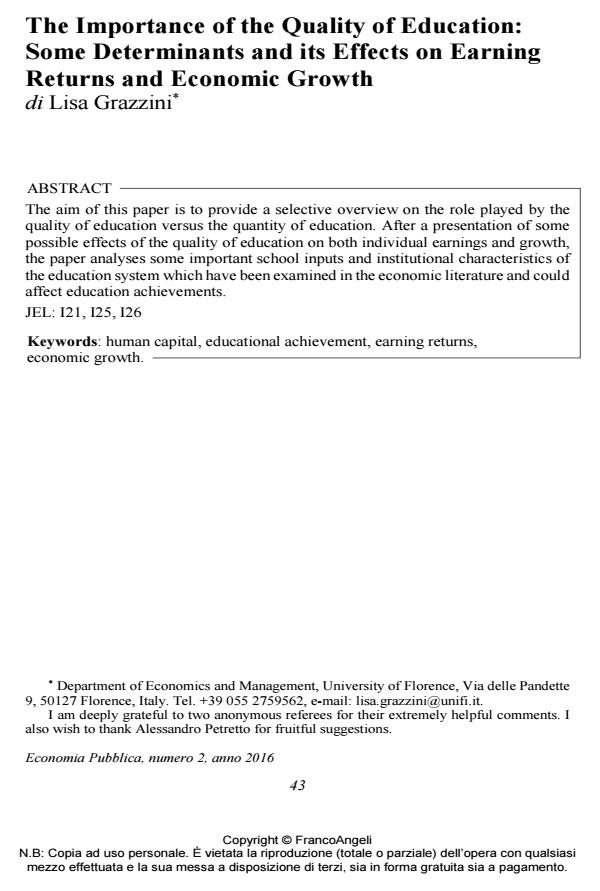The Importance of the Quality of Education: Some Determinants and its Effects on Earning Returns and Economic Growth
Journal title ECONOMIA PUBBLICA
Author/s Lisa Grazzini
Publishing Year 2017 Issue 2016/2
Language English Pages 40 P. 43-82 File size 308 KB
DOI 10.3280/EP2016-002002
DOI is like a bar code for intellectual property: to have more infomation
click here
Below, you can see the article first page
If you want to buy this article in PDF format, you can do it, following the instructions to buy download credits

FrancoAngeli is member of Publishers International Linking Association, Inc (PILA), a not-for-profit association which run the CrossRef service enabling links to and from online scholarly content.
The aim of this paper is to provide a selective overview on the role played by the quality of education versus the quantity of education. After a presentation of some possible effects of the quality of education on both individual earnings and growth, the paper analyses some important school inputs and institutional characteristics of the education system which have been examined in the economic literature and could affect education achievements.
Keywords: Human capital, educational achievement, earning returns, economic growth
Jel codes: I21, I25, I26
Lisa Grazzini, The Importance of the Quality of Education: Some Determinants and its Effects on Earning Returns and Economic Growth in "ECONOMIA PUBBLICA " 2/2016, pp 43-82, DOI: 10.3280/EP2016-002002